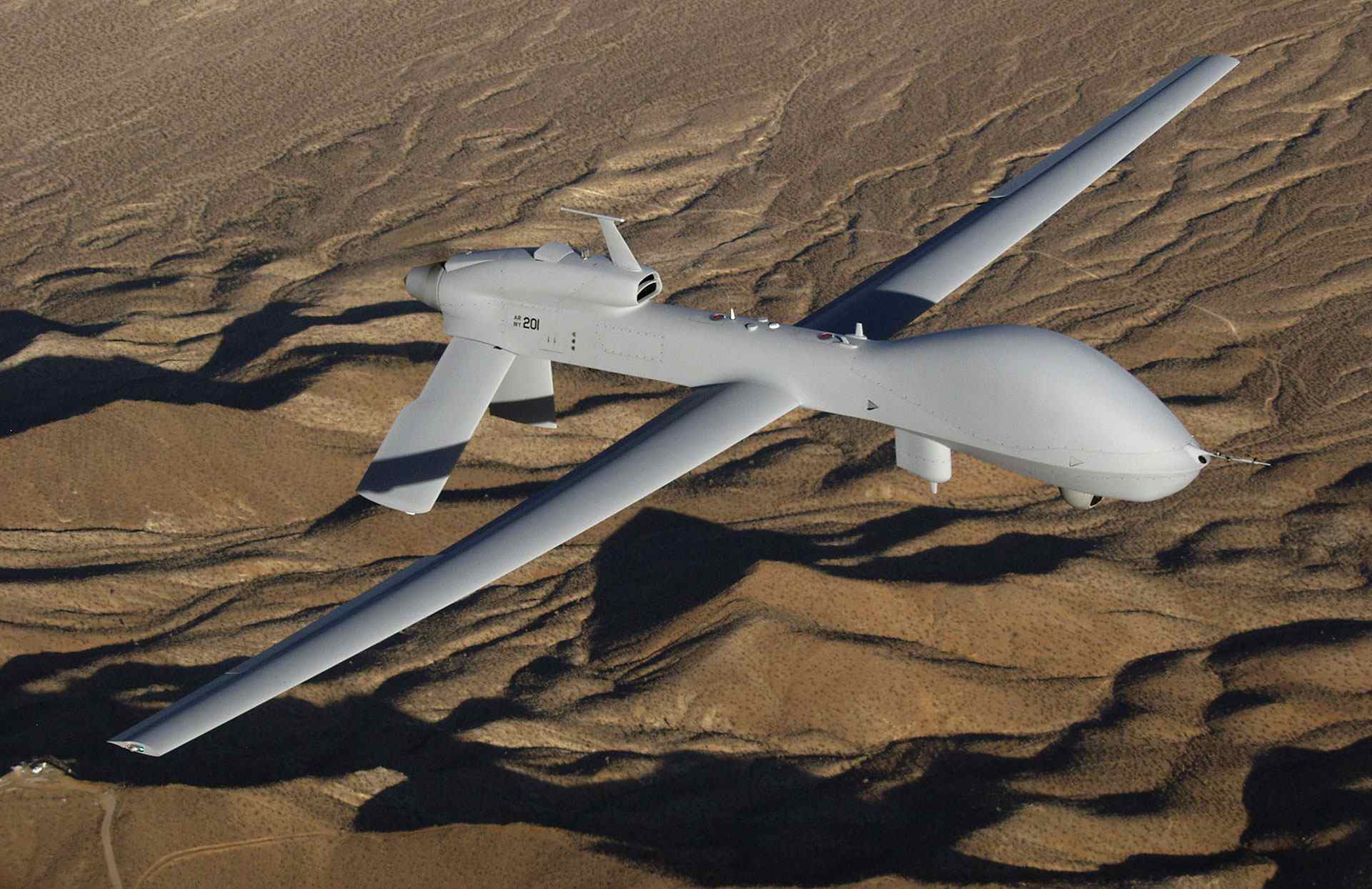The Wall Street Journal reported on November 23, 2022, that a group of 16 US Senators sent a letter to Pentagon chief Lloyd Austin asking the US defense department to send Gray Eagle MQ-1C drones to Ukraine.
According to the Senators, “the long-term benefit of transferring the MQ-1C is substantial.” The supply of such equipment “can change the strategic course of the war in favor of Ukraine.”
Earlier, CNN reported that the US is tweaking the MQ-1C for supply to Ukraine. Some drones are likely being stripped of sensitive equipment before supply to Ukraine.
Such equipment could include the synthetic aperture radar/ground moving target indicator (SAR/GMTI) system and other components to support its Electronic Intelligence (ELINT) gathering capabilities.
Stripping the drone of systems not required in the Ukrainian context would ensure that such sensitive systems that represent cutting-edge US technology don’t fall into Russian hands.
However, modifying the drone to an extent where little would be lost were the drone crash in Russian-controlled territory would likely take a long time.
Also, The Wall Street Journal reported that Washington is skeptical about transferring modern UAVs to Kyiv due to concerns about escalating tensions with Russia.
Earlier in October, a bipartisan group of 17 members of the US Congress had urged Defense Secretary Lloyd Austin to immediately deliver to Ukraine Gray Eagle and/or Reaper drones.
Reuters reported on June 1, 2022, that the Biden administration plans to sell four Gray Eagle drones to Ukraine, each capable of carrying up to eight Hellfire missiles, “for battlefield use against Russia” in the current conflict.
During a regular briefing on November 22, 2022, Pentagon Press Secretary Sabrina Singh announced that the US has not yet made any decision regarding the supply of reconnaissance and strike unmanned aerial vehicles (UAV) MQ-1C Gray Eagle to Ukraine.
“We are constantly studying and evaluating what we can deliver to Ukraine, but no decision has yet been made on the Gray Eagle,” she said.
It’s clear that the option to supply Gray Eagle MQ-1C drones to Ukraine is under active consideration, and reports of the drone being tweaked for supply would indicate that such supply may be imminent.
Gray Eagle MQ-1C Capabilities
The Gray Eagle MQ-1C is manufactured by General Atomics and is an upgraded version of the Predator drone widely used by the US military in Iraq and Afghanistan.

Featuring a length of 26 meters and a wingspan of 52 meters, the drone has a maximum take-off weight of 1,633 kilograms and a payload of 360 kilograms. Powered by a 164 hp heavy fuel engine, it has a maximum speed of 309 kph, a service ceiling of 29,000 ft, and an endurance of 25 hours.
The MQ-1C drones supplied to Ukraine would likely feature AN/AAS-52 Multi-spectral Targeting System (MTS) under the nose to enable the drone to identify and engage ground targets in all weather and lighting conditions using AGM-114 Hellfire missiles.
Cruising at over 25,000 fl, the MQ-1C would be able to see and identify targets at long ranges.
The Hellfire missile features Semi-Active Laser Homing (SALH), an eight-kilogram warhead, and a maximum range of around 11 kilometers. MQ-1C drone operators identify and geolocate the target using the MTS and then launch a Hellfire missile to home onto the target.
Game-Changing Potential Of MQ-1C
It’s believed that the long endurance of the MQ-1C drone and the deadly accuracy of the Hellfire missile would neutralize Russia’s conventional artillery advantage over Ukraine, an advantage that has already been eroded significantly by the HIMARS systems supplied earlier.
Besides Russian artillery, the Gray Eagle would put Russian ammunition depots and command centers deep in the interior at risk, stretching Russian supply lines and making them vulnerable to attack.
The range and accuracy of the HIMARS systems forced Russian forces to withdraw from the right bank of Dnieper. The range and accuracy of the Gray Eagle could force Russia to withdraw from the left bank too!
Gray Eagle Limitations
A Gray Eagle drone using its medium altitude cruising capability could identify and geo-locate targets at long ranges, but its Hellfire missiles have a limited 12-kilometer range. As such, the Gray Eagle is better suited for reconnaissance than attack. Indeed, its attack capability was developed for asymmetric warfare.
Ukraine will likely use the drones in coordination with HIMARS systems which have a 50-kilometer range, with the latter attacking targets identified and geolocated by the former.
The Gray Eagle has so far been operationally deployed in uncontested airspace. The large size of the drone and very limited airframe stealth would allow the drone to be easily tracked by Russian AD radars and the powerful airborne radars fitted on Russian MiG-31, Su-35S, and Su-30SM2 fighters.
Russian fighters, EW systems, and AD missile systems would force the MQ-1C to operate from deep within Ukrainian territory rather than close to the frontline, severely limiting the detection and targeting capability of the drone.
Gray Eagle operations in Ukraine would put cutting-edge US technology employed with the MTS system at risk of falling into Russian hands. Component failures could cause a Gray Eagle to stray and crash into Russian-controlled territory giving Russia access to a near-intact copy of the drone.
The US is in the process of fielding 15 Gray Eagle companies, each equipped with nine drones. Likely, the US would not be able to replace Ukrainian losses easily.
- Vijainder K Thakur is a retired IAF Jaguar pilot. He is also an author, software architect, entrepreneur, and military analyst. VIEWS PERSONAL
- Follow the author @vkthakur




